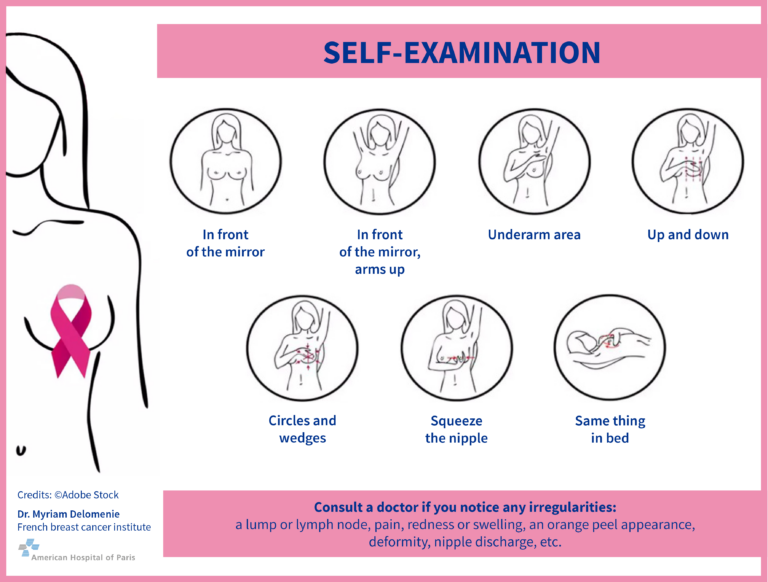Breast cancer:
understanding, preventing,
taking action
Globally, breast cancer is the most common cancer among women, affecting an estimated 1 in 8 women. Each year, more than 2.3 million cases are diagnosed. It is therefore essential to be aware of the risk factors, understand the importance of screening and adopt the right habits.
Risk factors
Being a woman is the main risk factor in breast cancer, as approximately 99% of cases concern women. However, men can also be affected, but less frequently (approximately 1% of cases). The symptoms are closely related to those of women.
Other factors increase the risk:
- Age: nearly 80% of breast cancers occur after the age of 50, and the risk increases with age.
- Family or personal history of breast or ovarian cancer: having a close relative with the disease increases the risk.
- Genetic predisposition: certain mutations, such as those in the BRCA1 and BRCA2 genes, increase the risk.
- Gynaecological history: early puberty, late menopause, absence of pregnancy or late first pregnancy.
- Hormone treatments: particularly those prescribed after menopause.
- Lifestyle: alcohol consumption, smoking, being overweight, an unbalanced diet and a lack of physical activity are aggravating factors.
- Exposure to radiation: particularly during previous medical treatments.
Nearly half of all breast cancers occur without any specific cause other than age. This highlights the importance of self-monitoring for all women from puberty onwards, including those with no specific medical history.
The importance of screening
Early detection of breast cancer increases the chances of recovery and allows for less aggressive and less invasive treatments, improving quality of life and reducing the risk of complications. According to the WHO, 70% of women who survive breast cancer have benefited from early diagnosis. When detected early, it can be cured in more than 9 out of 10 cases in developed countries.
In the absence of any particular risk factors, an annual clinical breast exam is recommended between the ages of 25 and 49. From 50 to 74, a screening mammogram is advised every two years. After 74, continued screening depends on personal judgment, in conjunction with the doctor. In some cases, particularly for women at high risk (family history, genetic mutations, etc.), personalized monitoring and earlier or more frequent screening may be recommended on medical advice.
Breast self-examination
In addition to mammograms, it is recommended that you regularly practice breast self-examinations. This simple procedure involves observing and palpating your breasts, armpits and nipples to detect any abnormalities, such as lumps, pain, unusual discharge or changes in shape and texture. It is advised to conduct a self-examination once a month from the age of 20, ideally a few days after menstruation, when the breasts are less sensitive. This allows women to become more familiar with their breasts and take action quickly if they have any concerns. Discover below the essential steps for performing a breast self-examination correctly.

Breast cancer is a major public health issue. While the disease cannot always be avoided, it is possible to take action on certain risk factors and, above all, maximize the chances of recovery thanks to early screening. Get informed, spread the message, and adopt the right habits: prevention and vigilance are the best tools in the fight against breast cancer. Let’s commit to taking care of our health and supporting those in need.
Sources:
World Health Organisation (WHO). ‘Breast cancer.’ August 2025.
National Cancer Institute (cancer.fr). ‘Risk factors for breast cancer.’
Health Insurance (ameli.fr). ‘Organised breast cancer screening for women between 50 and 74 years of age.’
